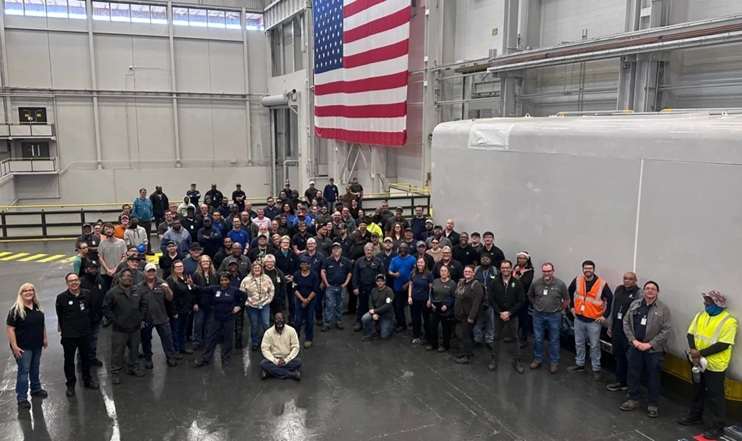Breathing New Life into Wind Energy: How GE Vernova is Leading the Charge
In the race to power the future sustainably, wind energy has taken center stage. But like all technology, wind turbines age, and their efficiency diminishes over time. That’s where repowering steps in—a revolutionary process that extends the life of wind farms while boosting performance.
In 2024, GE Vernova’s onshore wind business announced orders to repower more than 1 gigawatt (GW) of wind turbines across the United States. This milestone highlights a pivotal shift in the renewable energy sector, focusing not only on building new turbines but also on upgrading and optimizing the old. Here’s a closer look at why this is a game-changer.

What is Wind Energy Repowering?
Repowering isn’t just maintenance—it’s a transformative upgrade. It involves replacing older turbine components like blades, nacelles, and drive trains with the latest technology. This modern equipment enhances the turbines’ efficiency, increases their energy output, and extends their operational lifespan.
Why is this important? By utilizing existing infrastructure and grid connections, repowering significantly reduces the costs and resources required to modernize wind farms. For example:
- Lower Operational Costs: Newer components are more reliable, meaning fewer breakdowns and less maintenance.
- Enhanced Efficiency: Advanced technology allows turbines to generate more energy from the same wind resources.
- Sustainability: Recycling and reusing infrastructure minimizes waste and the need for new materials.
The Scale of GE Vernova’s Efforts
The repowering orders received by GE Vernova in 2024 are no small feat. These projects, scheduled to go online between 2024 and 2027, will use cutting-edge nacelles and drive trains manufactured at GE’s Pensacola, Florida, factory.
This isn’t just about improving turbines; it’s about creating opportunities for American workers in local factories. As Matt Lynch, general manager of Repower at GE Vernova, puts it:
“Repower projects like these help U.S. workers in U.S. factories take advantage of what we already have, where we already have it.”
By upgrading existing wind farms, GE Vernova is maximizing the potential of wind energy while supporting domestic manufacturing—a win-win for sustainability and the economy.
The demand for energy in the United States is expected to double in the coming decades. Meeting this growing need while reducing carbon emissions is a monumental challenge. Repowering offers a practical solution by optimizing what’s already in place.
Here’s why repowering is critical:
- Cost-Effective Energy Transition: Building entirely new wind farms requires significant investment in land, infrastructure, and grid connections. Repowering eliminates much of this cost by upgrading existing sites.
- Boosting Renewable Capacity: Older turbines can be transformed into powerhouses, generating more energy without expanding the footprint of the wind farm.
- Reducing Environmental Impact: By reusing infrastructure and extending the life of turbines, repowering minimizes waste and reduces the need for new materials.
GE Vernova’s efforts are part of a broader strategy to meet renewable energy goals while ensuring energy remains affordable and accessible.
GE Vernova’s Global Footprint
With an installed base of approximately 56,000 turbines and a total capacity of nearly 120 GW worldwide, GE Vernova is a leader in wind energy. The company’s repowering projects in the U.S. represent a significant step forward, but they’re just one piece of the puzzle.
Globally, wind energy continues to play a pivotal role in reducing reliance on fossil fuels. Repowering projects like those spearheaded by GE Vernova will be essential for countries aiming to achieve ambitious climate targets.
What Does the Future Hold?
The repowering projects scheduled through 2027 highlight the potential of wind energy to meet growing energy demands sustainably. As technology advances, the efficiency and capacity of turbines will only improve, making repowering an even more attractive option.
For the renewable energy sector, this is a clear signal that innovation isn’t just about building new—it’s also about optimizing the old. By repowering wind farms, companies like GE Vernova are showing that the transition to clean energy doesn’t have to start from scratch.
Wind energy repowering is a powerful example of how innovation can solve pressing challenges in the renewable energy sector. GE Vernova’s leadership in this area demonstrates the immense potential of upgrading existing infrastructure to meet future energy needs.
By breathing new life into aging turbines, repowering projects reduce costs, enhance efficiency, and support local economies. As the U.S. and the world strive for a cleaner, greener future, initiatives like these will play a crucial role in powering progress.
Whether you’re a renewable energy enthusiast or someone curious about the future of sustainability, one thing is clear: repowering is shaping the future of wind energy—and it’s only the beginning.
Related Post
